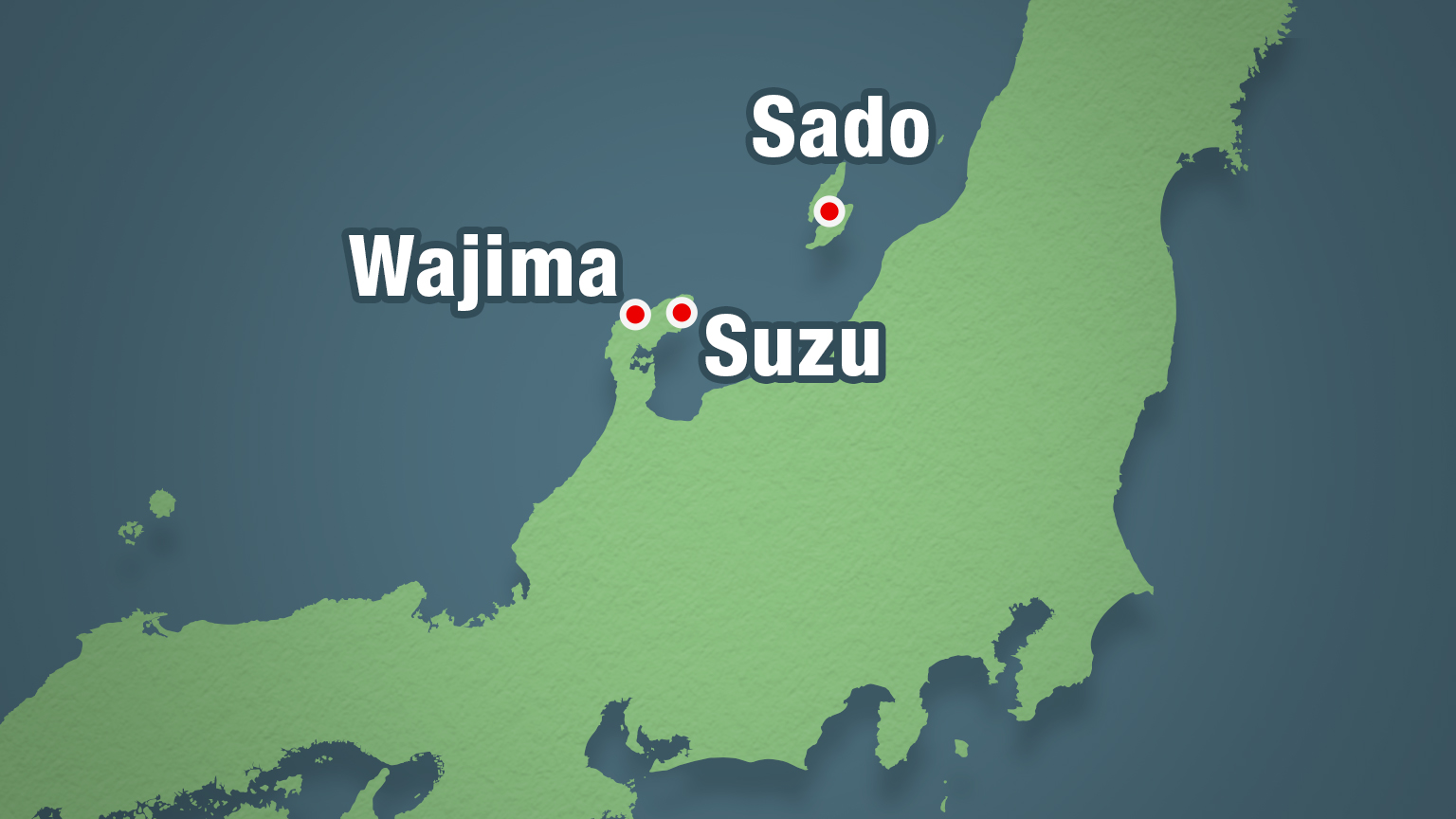Analysis of causes
Experts have been observing greater seismic activity under the Noto Peninsula for the past several years. They believe one cause is the subterranean movement of fluids.
Professor Nishimura Takuya of the Disaster Prevention Research Institute of Kyoto University, who has been analyzing the situation, says the fluids may have triggered the New Year's Day earthquake. He says careful attention should be paid to further such activity over a wider area.
Based on his studies of crustal deformations and seismic movements, Nishimura says the Noto Peninsula has become more active since 2020. He says fluids are flowing about 15 kilometers underground, making the surrounding faults slippery and stimulating seismic movement.
However, Nishimura points out the areas affected by the quake were greater than previous observations pointed to.
"Earlier seismic activity around Noto was confined to a width of about 30 kilometers east to west, but this magnitude 7.6 earthquake occurred over a much wider area," he says. "Seismic activity triggered by underground fluids may have released energy that had been accumulating in surrounding areas."
Nishimura called for caution. "Earthquakes are increasingly likely not only around the epicenter of this quake, but also in areas further east and west. We need to remain vigilant about earthquakes and tsunami for some time."
Active fault may have shifted over a 100-kilometer stretch
Professor Toda Shinji of Tohoku University, an expert on the mechanisms of faults and earthquakes, says the active fault itself may have shifted over more than a 100-kilometer stretch from east to west. He also called for greater vigilance, saying the area surrounding the fault is also prone to earthquakes.

In light of the scale of the January 1 quake, as well as his other investigations of active faults, Toda concluded the following: "This fault began to shift around the city of Suzu, but it appears to have expanded 50 kilometers northeast toward Sado City and 50 kilometers west toward Wajima City, making a total fault length of 100 kilometers or more. The energy of the earthquake was about five times that of the main quake that hit Kumamoto (in 2016), and the tremors were extremely strong over a wide area."
He also urged caution.
"This was a major earthquake on an active fault line, and there will be many more quakes in the future," he says. "A large earthquake that strikes under the sea also raises the possibility of further tsunami, so it is vital to continue paying close attention."
Movement on three different faults
Another expert says at least three different faults moved.
Professor Yagi Yuji of the University of Tsukuba analyzed the movement of underground faults based on data from seismometers observed in the earthquake.
He says he found that faults moved one after another over a period of more than 40 seconds in an area about 120 kilometers long near the coast of the northern part of the Noto Peninsula.
The first major movement occurred at a fault off the coast of Suzu City about 10 seconds after the quake began.
Twelve seconds later, a fault beneath Wajima City began to shift significantly and expanded.
Furthermore, four seconds later, and 26 seconds after the tremor began, a fault also moved significantly off the northeastern coast of the Noto Peninsula, away from Wajima City.

Professor Yagi says he believes that at least three different faults moved because the shape of the fault and the angle of the slip are very different. Several active faults have been identified near the northern coast of the Noto Peninsula, and they may have been linked.
Yagi said multiple faults linked to each other led to the massive quake and triggered the tsunami.
In particular, the movement of the fault beneath Wajima City was remarkably large and caused major damage.
He said that considerable stress has been released. But he added that active seismic activities are likely to continue, and also wants people to remain on the alert.
